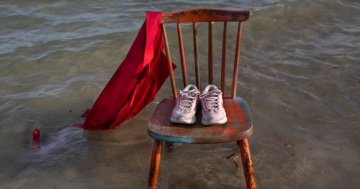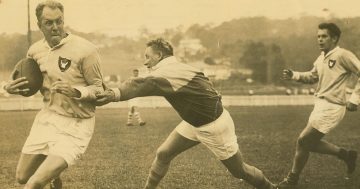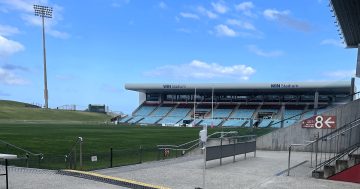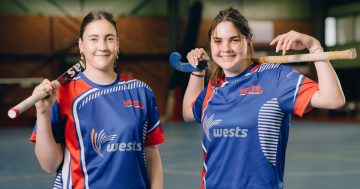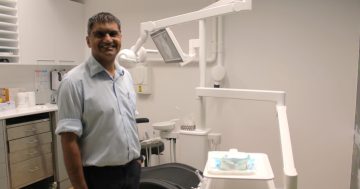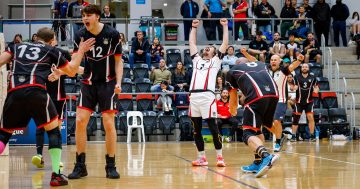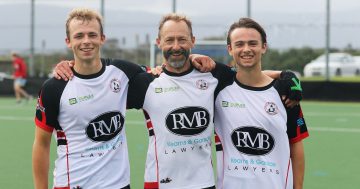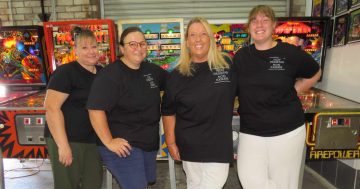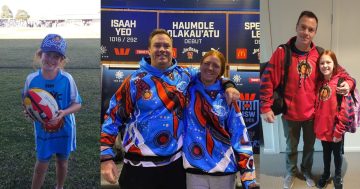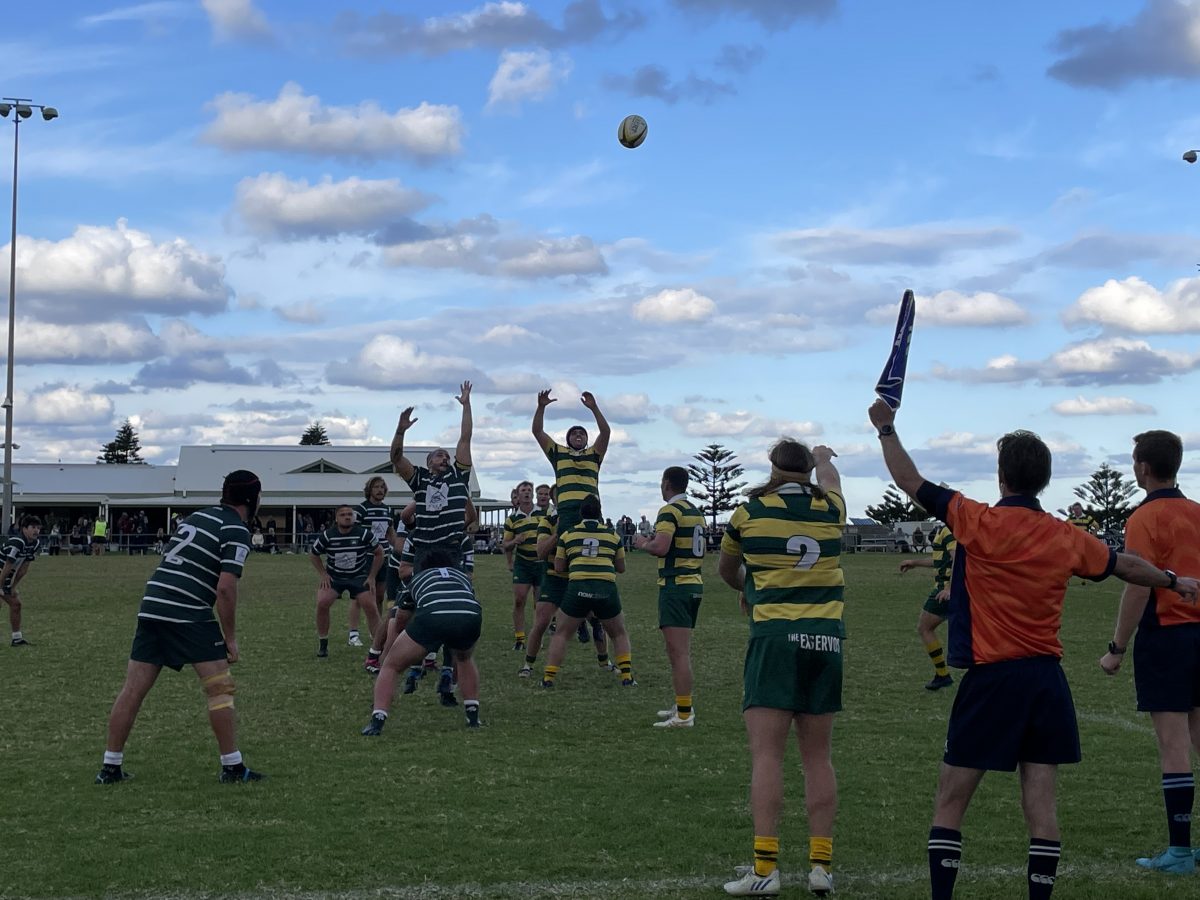
Shamrocks and Shoalhaven do battle during game day down by the coast at Woonona in the Illawarra rugby competition. Photos: Tom Ellicott.
It’s all hands to the wheel on game day down by the sea at Woonona in Wollongong for the Shamrocks Rugby Club.
It’s a tradition passed on through the generations, from fathers to sons, and from mothers to daughters who help by the sidelines or now can join in their own women’s comp.
There’s an army of volunteers working behind the canteen – serving appropriately, among other beverages, a cold Guinness. At the sausage sizzle, the tongs are working overtime, and happy mums are walking out from a Mother’s Day lunch in the club room.
The playing field is spic and span for the big clash with the classy Shoalhaven team, thanks to the working bee of the older fellas, mainly former Shamrocks players, known as the ‘Last 15’, who meet every Thursday to maintain the amenities.
But sadly there’s one major thing in decline: players.
The ranks of male and female players have dwindled significantly following the two years of pandemic upheaval. Local teams are finding it hard to get back on their feet and younger potential rugby players have drifted to other sports where they don’t have to travel as far, such as Oztag. Cost of living pressures have forced some of them to abandon sport altogether.
Sadly, it’s a trend highlighted by the Australian Sports Foundation in a recent report that found many sporting clubs in Australia, not just rugby, were under pressure to survive.
The report found that rising costs and falling revenue were pushing almost one in five community sporting clubs to the brink of collapse. It said that in the last year, one in four (24%) small community sporting clubs were “contemplating closing”.
The younger players were simply not returning after the pandemic, with one in four (27%) of clubs “reporting a decline in registrations among 15-19 year-olds”.
Cost of living impacts were “a growing barrier to member registrations”, the foundation report said.
But rugby has its own fight, especially in the Illawarra. It sparked president of the Illawarra District Rugby Union (IDRU) Tom Ellicott to write a strongly worded letter to the boards of both NSW Rugby and NSW Country Rugby calling for urgent action to stop rugby’s decline. The boards have agreed to meet Illawarra clubs in July to discuss the issues raised in his letter.
It comes as rugby enjoys a resurgence at the higher levels with a recent high-profile multi-million signing for former league player Joseph Sua’li’i.
Women have also joined the sport but according to Tom, “sadly we [the Illawarra] can’t get enough senior players in the women’s comp, although the numbers for junior girls is strong”. At the grassroots level, it appears the running game is struggling for momentum.
Tom wrote in his personal capacity that he had observed “what appears to be ever increasing exhaustion among club and district volunteers who are working to sustain clubs and, to develop and directly fund the game and, they do so without any support which addresses the games declining numbers of volunteers and players”.
The IDRU district office, despite doing a mammoth job, needed increased funding and resources to make sure rugby could compete against other sporting codes that were often better resourced, and more able to beat rugby to infrastructure grants. Rugby was losing its ground, literally, particularly to AFL.
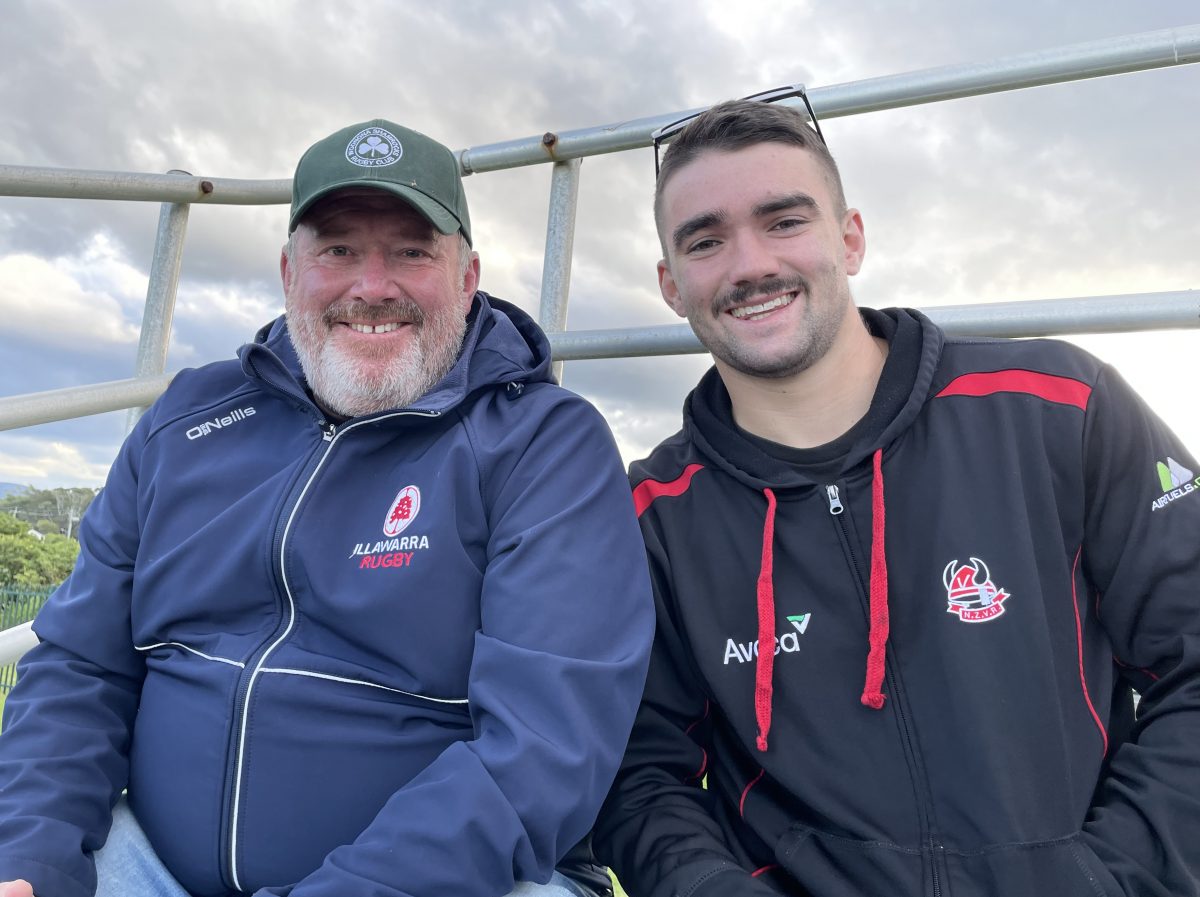
Illawarra Rugby president and former Shamrocks player Tom Ellicott with his son and Shamrocks player Hamish.
“The pathway issue consequently sits as the major threat to our senior rugby competition which we are grappling with,” Tom wrote. “Other sports have a clear narrative [particularly soccer and AFL] around this development area and yet we don’t from State or Country level. We will not have Colts at the Country Champs this year as we won’t have the numbers on top of the participation guidelines which have been imposed by CRU [Country Rugby Union]. Bottom line is our good Colts are going to Sydney to play there in the Colts competition.”
He said Illawarra had produced many great rugby players, “many at Wallaby, Super Rugby and NRC levels and many are currently involved at Shute Shield clubs”. This included Jed Holloway, a member of the Wallaby squad, who was a junior at the Shamrocks before his family moved to Yamba on the North Coast.
The mighty Vikings Rugby Club, long-time rivals of the Shamrocks and a foundation club, had voted to step down from first grade for the first time after more than 50 years. It has just 26 players on its registration books this year and for player safety concerns decided to drop down a grade.
Former Vikings player Brett Martin says 2023 is just a blip in the history, and with strong financials and infrastructure, the Vikings and rugby will bounce back.
“We are looking to involve Fiji clubs and refugee communities in our club,” Martin said. “We think the future is bright, despite this year.” Before COVID, the Vikings were fielding three grades with ample reserves.
Shamrocks treasurer Mark Dandridge said the club had a sea of volunteers who had helped build the club up from scratch to a very strong position financially and with its facilities. He said it was now hard also fighting other sports for sponsorship dollars locally with the fall in registrations.
“It’s extremely difficult and it’s like everyone is suffering from a COVID hangover,” he said.
From three grades with plenty of players before COVID, the Shamrocks were struggling to field a competitive side every week. “We are struggling to fill all our grades,” he said.
Some players have not returned due to the training and travel required in the Illawarra for rugby. Some have opted for more ‘easier’ lifestyle sports such as Oztag, where the local Hollymount field is often full of players.
Mark is also concerned that insurance from Australian Rugby Union for injured players “doesn’t pay for anything”.
Tom Ellicott wrote: “What we need is some focus from you [rugby boards] … firstly to get in and support the volunteers who are running out of bullets and clear communication about what role you have and what you will do to support clubs. We cannot keep going the way we are.”
At the end of game day, the Shamrocks have had a walloping from Shoalhaven in the top two grades. But the club song is still sung strong in the dressing rooms and the enthusiastic volunteers are there as normal to help with the day and the clean-up and help keep rugby’s flame alive. The Shamrocks will bounce back and so, also the faithful believe, will rugby.
NSW Rugby was contacted several times for comment.








